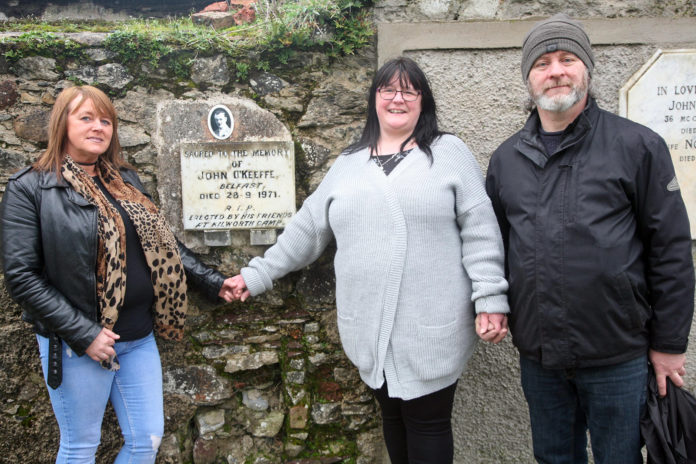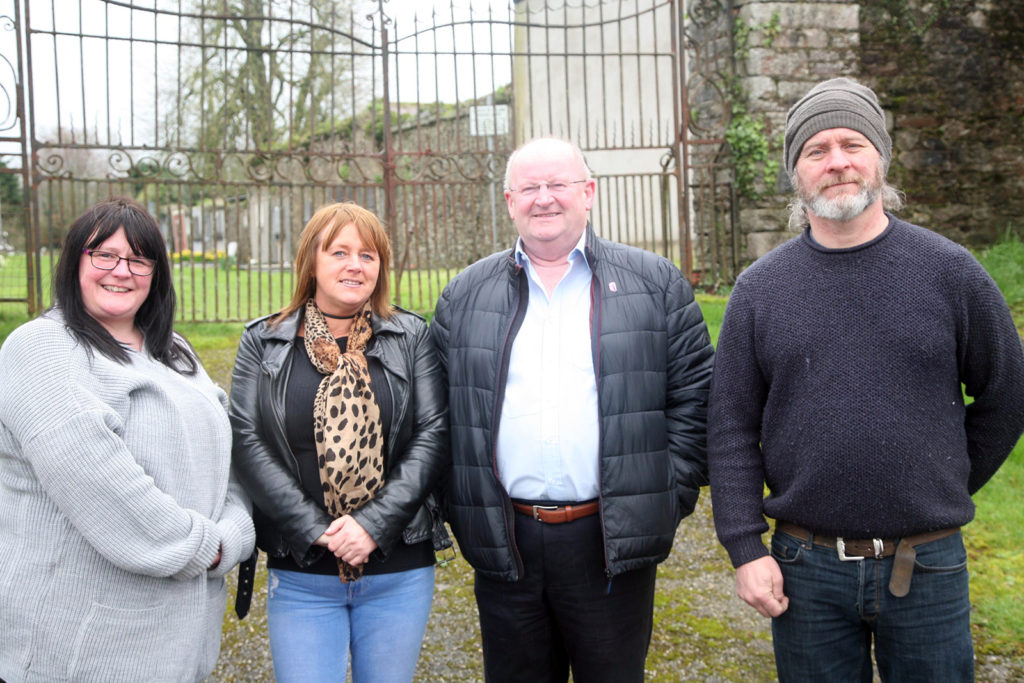
In 1971, Northern Ireland stood on the brink of civil war as sectarian violence threatened to spiral out of control.
There were many such instances in the divided city of Belfast where loyalist mobs systematically drove Catholic families from their homes.
Those who held their ground faced the prospect of being fire bombed in their beds and there were numerous instances of families fleeing in the night as their homes were razed to the ground.
John O’Keeffe, whose main priority was providing for his wife Bridget and 9 children, was forced to flee Belfast in 1971 as a result of the unrest.
Under an Irish Government initiative, he moved to the Liam Lynch Military Camp near Kilworth, which provided refuge for several Catholic families.
The camp was a haven for the relocated families who made the best of their situation.

While walking home from the nearby Glocca Maura Inn enroute to his accommodation in Kilworth on September 28, 1971 John O’Keeffe was struck by a car and killed.
His wife and young family eventually returned to Belfast with Bridget never fully recovering from the trauma of her loss.
Bridget passed away without ever discussing the death of her husband and as a result, the 9 children never found out the final resting place of their father.
After several fruitless efforts, surviving members of the family this year made a concerted effort to locate the final resting place of John O’Keeffe.
Thanks to the reliable memory of local people, some detective work by officials and the professionalism of undertakers, John’s final resting place (in Castlehyde cemetery) was discovered.
Speaking to The Avondhu, John’s son Kevin, said it was source of great relief and comfort that they now had a grave to visit.
“People were very sympathetic and we were lucky that things fell into place fairly quickly. We got a lot of help from Canon Michael Fitzgerald in Mitchelstown. Undertaker, Aidan O’Brien, remembered the accident and also assisted us greatly. The Library in Cork provided a newspaper article that proved very useful and we were also able to get my father’s death certificate,” he said.
Locating the grave proved problematic because the region’s largest cemetery (Kilcrumper) had no record of a John O’Keeffe being buried there in 1971. Following inquiries by Fermoy undertaker James Ronayne, it transpired that 1971 was the year, new graves ceased to be dug in Old Kilcrumper Cemetery and New Kilcrumper Cemetery was not yet operational.
Jim Nash from Kilworth, a man with a great interest in local history, was able to eliminate Kilworth graveyard (adjacent to the now Village Arts Centre) as John’s final resting place. Attention them moved to Castlehyde Cemetery, a short distance outside Fermoy on the Mallow Road.
James Ronayne was aware that former Irish solider and Fermoy native Paudie McGrath, had done extensive research on this graveyard. Paudie was able to confirm the exact location of John O’Keeffe’s final resting place, which is marked by a small plaque inscribed ‘Sacred to the memory of John O’Keeffe, Belfast died 28-09-1971 R.I.P. erected by his friends at Kilworth Camp’.
John O’Keeffe’s daughter Elizabeth O’Keeffe, and his son Kevin, along with Kevin’s partner Colleen Prendergast, thanked everyone who assisted them with their search.
“It means everything to know where my father is buried, so many people have helped us along the way, it was such a relief to find dad’s grave. I was struck by the beauty and calmness of the place, I now know he’s resting in peace,” Elizabeth said.







